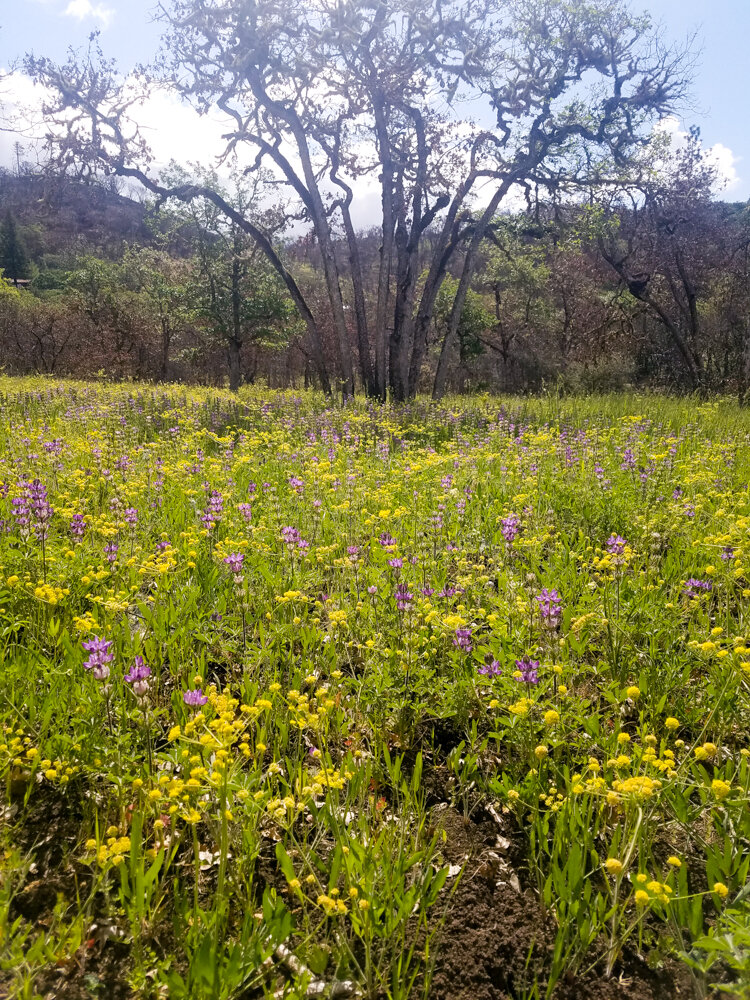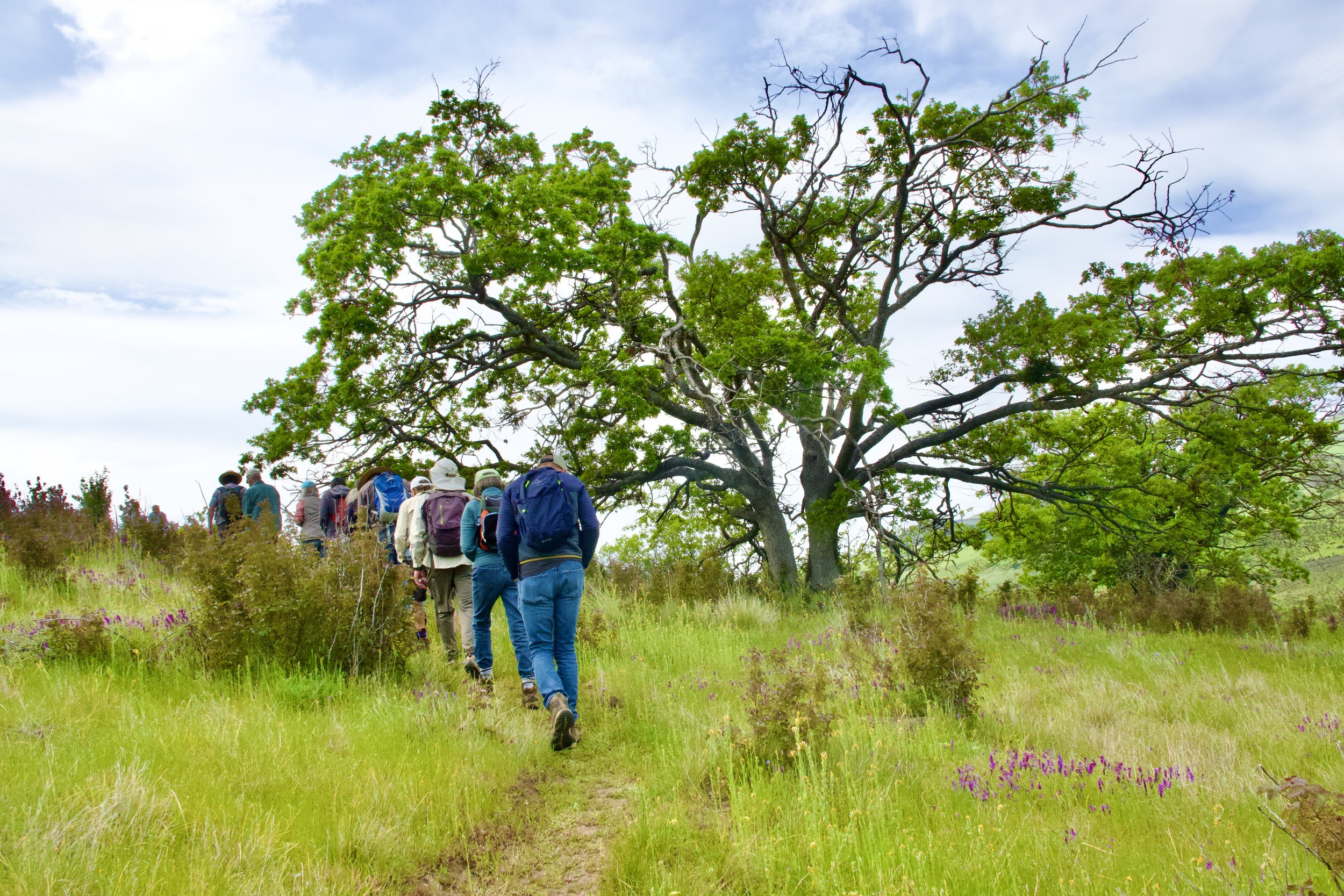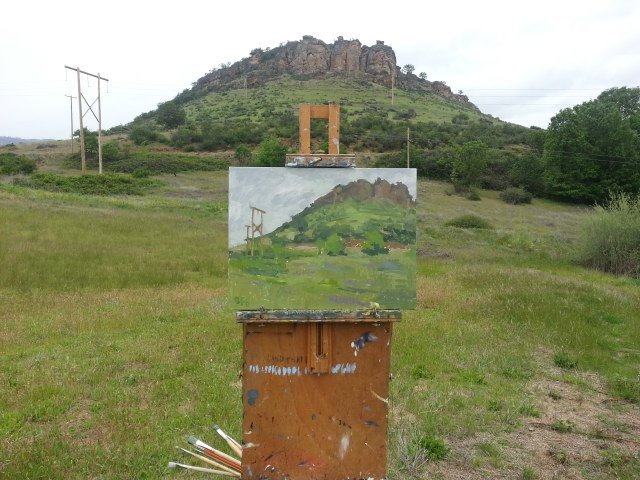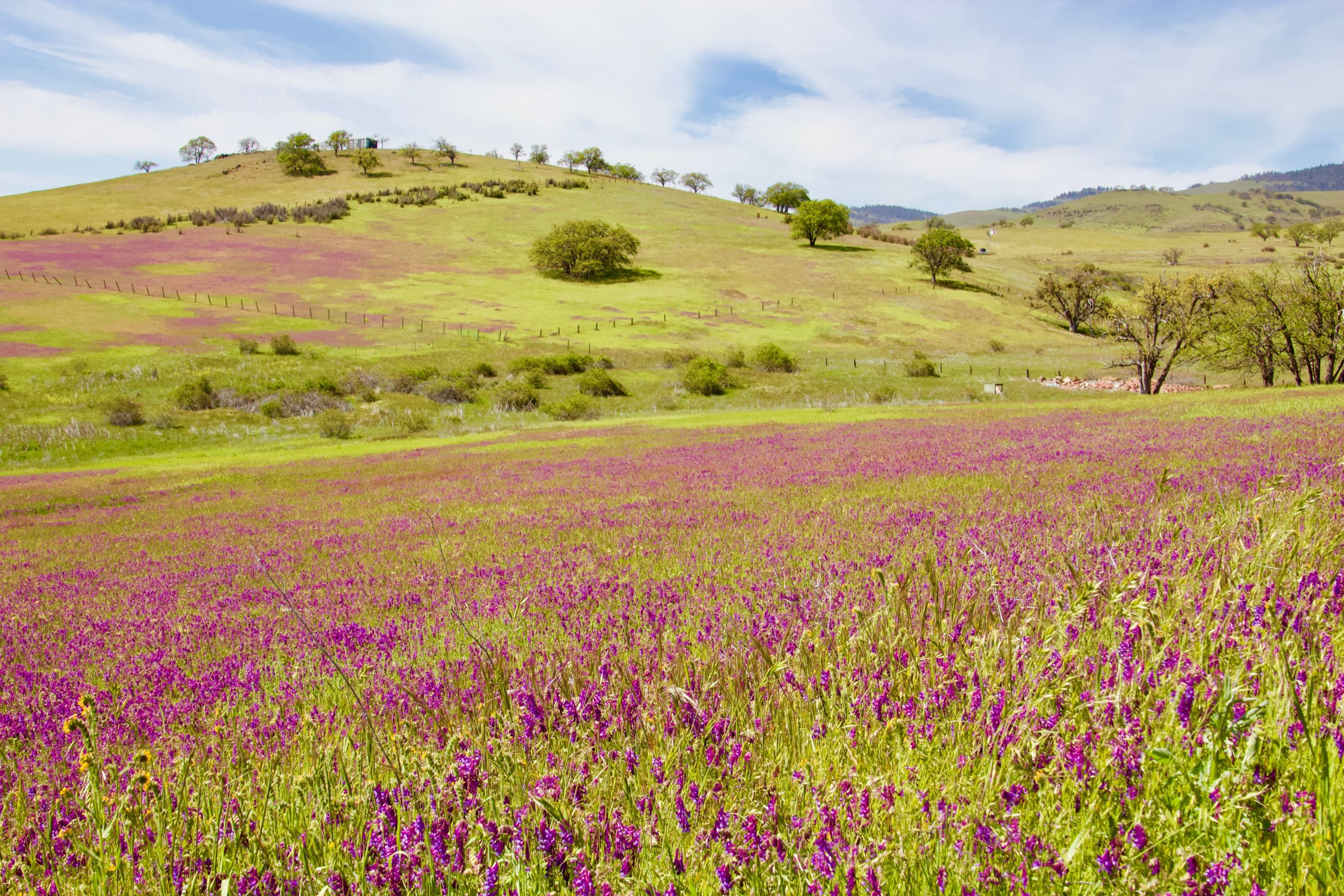We did it!
Property Affected by Obechain Fire Conserved along Kanutchan Creek in Eagle Point
The ideal recipe for supporting deer and elk habitat at lower elevations in the Rogue Basin goes something like this. First you start with rolling hills with all aspects (north, south, east, west).
Add a large dollop of the following and mix into a montage of habitats:
Oak savanna and denser oak woodlands
Meadows, big and small, dry to seasonally moist
Buckbrush chaparral
Add some mixed evergreen forest and woodlands on ridgetops and north aspects to provide thermal cover for wildlife. Lastly, for perfect results, include some streams and ponds and place this patchwork of vegetation next to federal land connected to higher elevations and wildlands.
This recipe of mingled-up vegetation communities and landforms perfectly describes the 159-acre Kanutchan Creek conservation easement (CE) near Eagle Point, recently added to SOLC’s conserved lands. It is a refuge for wildlife like cougar and California Quail and includes designated Oregon Department of Fish & Wildlife winter range for deer and elk. It is adjacent to a large area managed by the Butte Falls Resource Area-BLM, near Round Top Butte Research Natural Area, and just 1/2 miles from another conservation easement. It is also in our Little Butte Creek Focus Area, which is a priority conservation area because the watershed is a stronghold for salmon, it is a regional restoration priority, and due to the abundance of oak mosaic landscapes and large ranches.
This recipe can’t be found in a Betty Crocker cookbook or on the Milk Street podcast; it is a pyro-recipe. This mosaic of habitats so critical for wildlife was created and tended by wildfire and for long-term maintenance and health, requires fire. So, last September when the 32,671-acre South Obenchain Fire burned the entire property during an extreme fire weather event, SOLC staff were not deterred and continued to work on this important conservation project. The property burned at low, moderate, and high intensities and was most intense on hilltops and ridgelines. Some patches of oaks received a gentle underburn whereas in other patches most of the trees were top-killed. Much of the chaparral clumps were completely burned and the forests on the hilltops were especially impacted.
The high winds and speed of the fire brought awful destruction and heartbreak for families: 33 homes and 56 buildings were lost. But it also brought ecological services to the vegetation communities. Almost a year later, what do we find at the Kanutchan Creek property? Baby buckbrush growing in the ash of parent shrubs; vigorously resprouting oaks, madrones and other tree and shrub species; and numerous little oaks germinating from acorns. Last spring and early summer, the wildflowers were spectacular, including a whole bunch of special status Delting’s microseris, which had not been detected before the fire.
All of the landowners we work with who have donated conservation easements are both extraordinary and generous. Not only do they help to fund the CE with a long-term stewardship fund, which will support monitoring the property into the future to ensure the terms are upheld, they are also giving up development rights. Sandy Pearson, who placed the CE on her land before selling her property, is no exception. Why did she do it?
Conservation owner and easement donor, Sandy Pearson
“I guess I would say that life changes required that I leave the Rogue Valley, so I am delighted that the Southern Oregon Land Conservancy can step in and ensure the land I love will continue to be protected, as much as it can be in this time of climate crisis.
I especially hope the native grass meadows can recover from the fire, as they were the most spectacular aspect of the property and something that gave me a lot of pleasure. I'm sure the resident Red-tailed Hawk pair will continue defending their nest tree from all disturbance, including the land trust easement inspectors.
Also, that if it weren't for the easement restrictions, my land could have been sold for goat pasture, which, not to insult goats or their admirers, did not seem to me to be an appropriate use of this special place which still supports so many good native plants.
And make me an offer!”
We are grateful to Sandy Pearson and want to reiterate – make her an offer!
We are also reminded of the importance of disturbance and renewal, of which wildfire is a part. The recovery from the wildfire brings to mind the saying: tall oaks from little acorns grow.
















